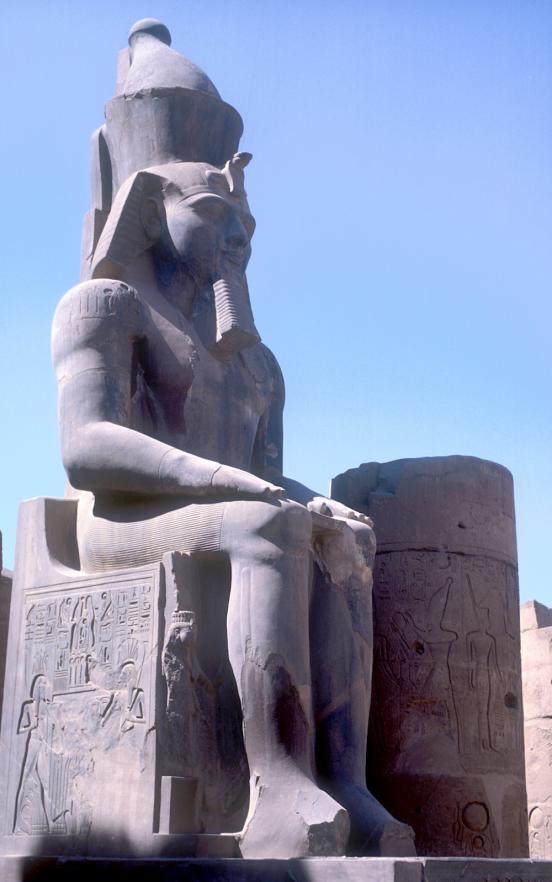Rameses II

Rameses II ruled Egypt for 67 years and is considered to be ancient Egypt's greatest builder. One of Egypt’s most lauded kings, Rameses II ruled longer than any pharaoh except Pepy II (who is said to have reigned for ninety-four years). Rameses II ascended to the throne when he was twenty years old and ruled until age 87.
Rameses II was one of the most prolific builders in ancient Egyptian history. He was active in erecting temples at Luxor and Karnak, completed his father’s temple at Abydos, built the great rock-cut temple at Abu Simbel, and constructed his own huge Memorial Temple, the Ramesseum, at Thebes. He also founded the eastern Delta city of Pi-Ramesse, and carved a huge tomb (KV 7) for himself in the Valley of the Kings. But Rameses II’s claims to greatness as a military genius are not justified. The late American Egyptologist John Wilson described him as “a stupid and culpably inefficient general.” For example, the most celebrated of his military campaigns was the battle of Kadesh. In regnal year 5 (1275 B.C.), Rameses II led his army of twenty thousand men against thirty-seven thousand troops of the Hittite king, Muwatallis. The results of the campaign were indecisive and the war ended in a stalemate. Rameses II nevertheless devoted considerable space on temple walls boasting of what he claimed was a great and brilliant victory. (It should be kept in mind that many “historical” texts have a strong propagandistic nature.)
Rameses II had several wives, but his principal one was Nefertari, whose tomb in the Valley of the Queens is one of the most beautiful in Egypt. The pharaoh was father to over one hundred children, by Nefertari and a large number of other principal wives. Most Egyptian pharaohs never acknowledged their offspring in their texts, and usually we know the names of only a few royal family members. By contrast, we have the names of nearly thirty sons and thirty daughters of Rameses II, all shown in processional scenes on the walls of over ten temples in Egypt and Nubia. Many of his sons were buried in a unique and complex tomb in the Valley of the Kings, KV 5, one of the largest ever found in Egypt, dug close to the tomb of their father. The mummy of Rameses II was found in the Dayr al Bahri cache in 1881. Today, it is on display in the Egyptian Museum in Cairo.
